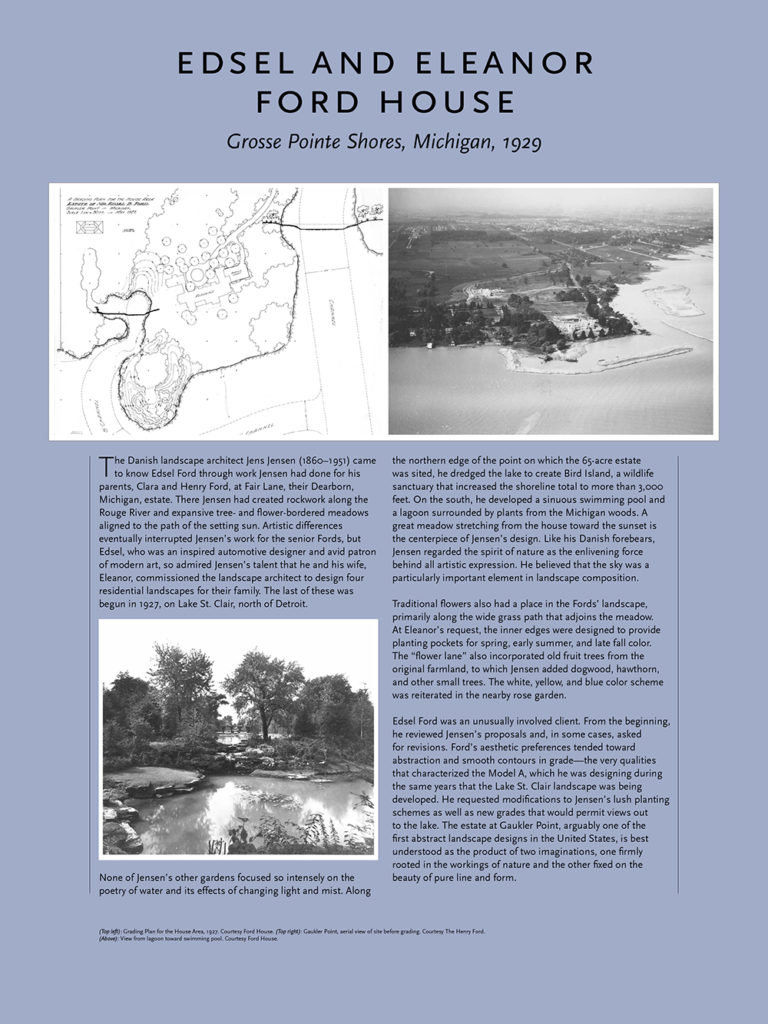
The Danish landscape architect Jens Jensen (1860–1951) came to know Edsel Ford through work Jensen had done for his parents, Clara and Henry Ford, at Fair Lane, their Dearborn, Michigan, estate. There Jensen had created rockwork along the Rouge River and expansive tree- and flower-bordered meadows aligned to the path of the setting sun. Artistic differences eventually interrupted Jensen’s work for the senior Fords, but Edsel, who was an inspired automotive designer and avid patron of modern art, so admired Jensen’s talent that he and his wife, Eleanor, commissioned the landscape architect to design four residential landscapes for their family. The last of these was begun in 1927, on Lake St. Clair, north of Detroit.
None of Jensen’s other gardens focused so intensely on the poetry of water and its effects of changing light and mist. Along the northern edge of the point on which the 65-acre estate was sited, he dredged the lake to create Bird Island, a wildlife sanctuary that increased the shoreline total to more than 3,000 feet. On the south, he developed a sinuous swimming pool and a lagoon surrounded by plants from the Michigan woods. A great meadow stretching from the house toward the sunset is the centerpiece of Jensen’s design. Like his Danish forebears, Jensen regarded the spirit of nature as the enlivening force behind all artistic expression. He believed that the sky was a particularly important element in landscape composition.

Traditional flowers were also given a place in the Fords’ landscape, primarily along the wide grass path that adjoins the meadow. At Eleanor’s request, the inner edges were designed to provide planting pockets for spring, early summer, and late fall color. The “flower lane” also incorporated old fruit trees from the original farmland, to which Jensen added dogwood, hawthorn, and other small trees. The white, yellow, and blue color scheme was reiterated in the nearby rose garden.
Edsel Ford was an unusually involved client. From the beginning, he reviewed Jensen’s proposals and, in some cases, asked for revisions. Ford’s aesthetic preferences tended toward abstraction and smooth contours in grade—the very qualities that characterized the Model A, which he was designing during the same years that the Lake St. Clair landscape was being developed. He requested modifications to Jensen’s lush planting schemes as well as new grades that would permit views out to the lake. The estate at Gaukler Point, arguably one of the first abstract landscape designs in the United States, is best understood as the product of two imaginations, one firmly rooted in the workings of nature and the other fixed on the beauty of pure line and form.
For more about the Edsel and Eleanor Ford House read A Genius for Place: American Landscapes of the Country Place Era by Robin Karson.
For more about Jens Jensen read The Native Landscape Reader by Robert Grese.